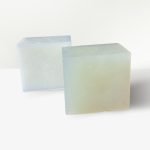Introduction
As an Australian business owner, particularly in the skin, cosmetic, and body care industries, you may seek ways to expand your brand’s reputation and offerings without breaking the bank. One strategy that is gaining traction is the use of private-label products. They’re like a well-crafted perfume – subtle yet powerful, making a remarkable impact on your customers and bottom line.
The private label market has experienced steady growth in recent years. As reported by Supermarket News, dollar volume for store brands surged by 10.3%, nearly double the increase noted for national brands. This growth highlights the increasing preference for private-label offerings among consumers.[1]. Now, that’s what we call a ‘scent-sational’ statistic!
Understanding Private Label Products
Private label products are commonly produced by one company and packaged and marketed under a different company’s brand. This strategy offers several benefits, including higher profit margins and the opportunity to create unique offerings that reflect your brand’s identity.
Consider the success of local businesses like Nourished Life and Biome with their private label lines[2]. These companies have enhanced their brand recognition and customer loyalty through these lines, providing a model for other Australian businesses.
Private-label products allow businesses to stand out from the crowd. Like a bold, unique perfume in a sea of generic scents, they offer an exclusive solution that can significantly enhance brand image and profitability.

The Economic Benefits of Private Label Products
Private-label products can significantly improve profit margins. Since businesses have control over production costs, they can ensure a healthy markup while offering their customers an affordable price. It’s like crafting the perfect body lotion – balancing quality and cost to create a product that leaves everyone feeling good.
A study published on NielsenIQ confirms the profitability of private label products[3], and this trend also extends to other industries.
Steps to Launching Your Own Private Label Products
Creating private-label products involves several steps, from idea generation to manufacturing. Here are some tips for creating a successful private-label product line:
- Identify a profitable niche: Look for popular products saturated in the market.
- Find a reliable manufacturer: Partner with a manufacturer that can deliver quality products on time.
- Design a unique packaging: The packaging should reflect your brand and attract your target audience.
- Market your products: Use different marketing strategies to promote your products.
Remember, the business publishing this article can assist you, providing expertise and support as you develop your private label line.
Case Study: Successful Private Label Brands
Several Australian businesses have thrived with private-label products. For example, Nourished Life has built its reputation on high-quality private-label products[4]. They’ve done this by focusing on quality, affordability, and unique offerings that can’t be found elsewhere.
Similarly, Biome offers a wide range of products[5]. They’ve built customer loyalty and drive sales by providing quality products at lower prices.
Conclusion
Private label products offer numerous benefits, from higher profit margins to increased brand recognition. As a small business owner or entrepreneur, incorporating private label products into your business strategy could be a game-changer.
We invite you to explore the possibilities of private-label products. Who knows? Your brand might be the next big ‘scent-sation’ in the market!
1: Double-digit growth of private label continues into Q1
2: Private label had a record year in 2022
3: The state of private labels in the United States



























